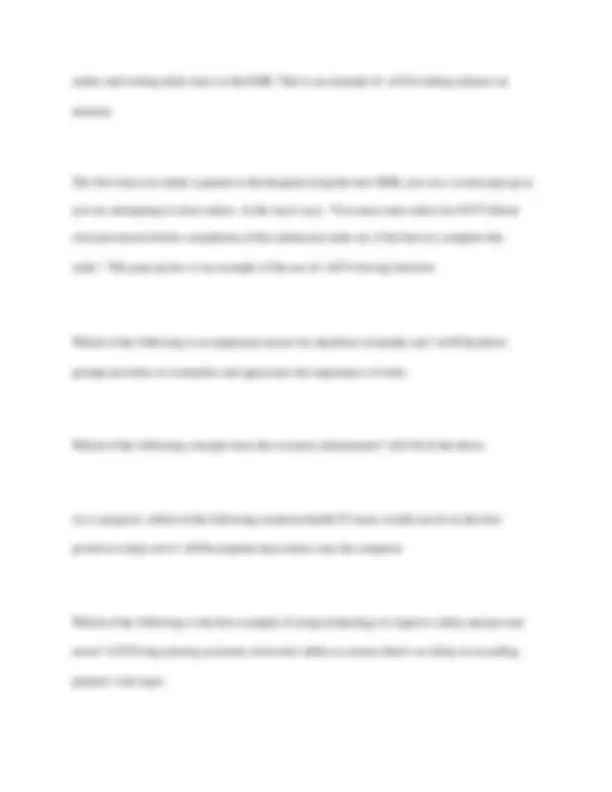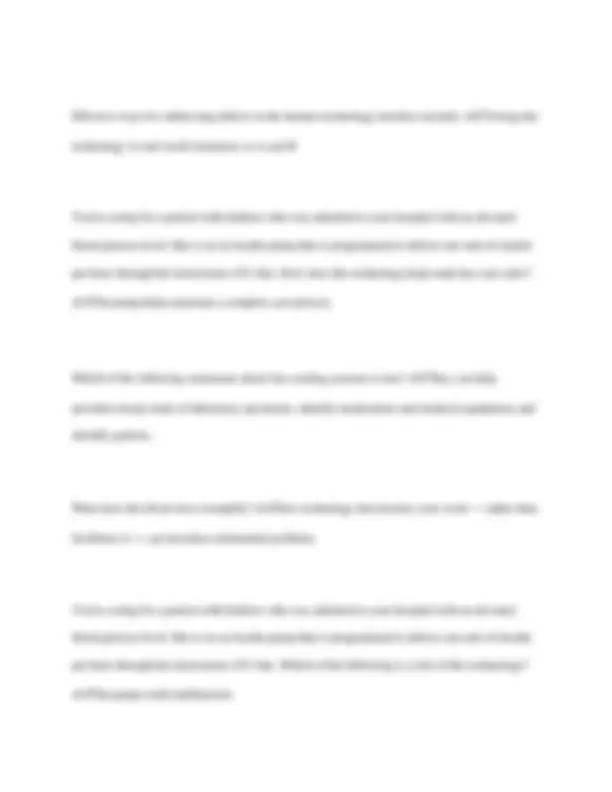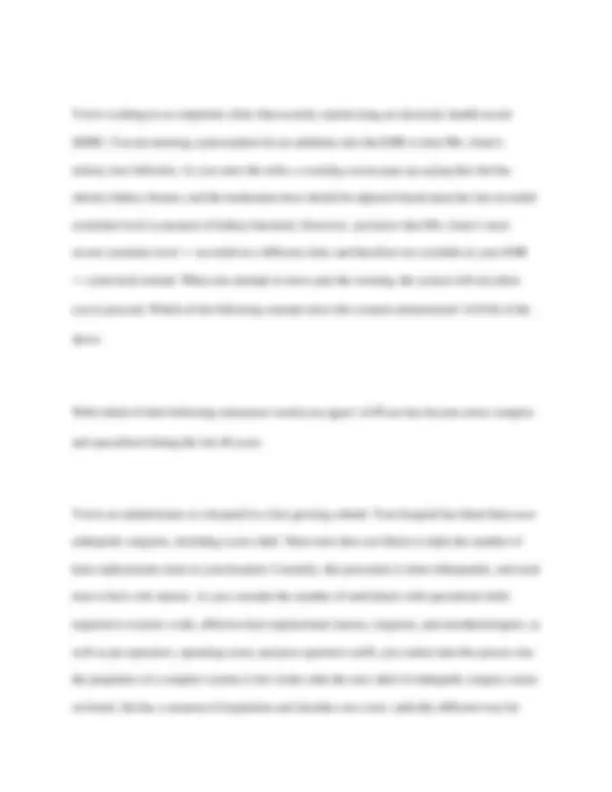





Study with the several resources on Docsity

Earn points by helping other students or get them with a premium plan


Prepare for your exams
Study with the several resources on Docsity

Earn points to download
Earn points by helping other students or get them with a premium plan
Community
Ask the community for help and clear up your study doubts
Discover the best universities in your country according to Docsity users
Free resources
Download our free guides on studying techniques, anxiety management strategies, and thesis advice from Docsity tutors
A series of questions and answers related to human factors in healthcare. It explores concepts like unconscious processing, error types, strategies for minimizing errors, and the role of technology in improving safety. Insights into how human factors principles can be applied to design safer healthcare systems and processes.
Typology: Exams
1 / 7

This page cannot be seen from the preview
Don't miss anything!




Human factors is the study of: ✔✔All of the above or All the factors that make it easier to do work in the right way
Which of the following is an example of unconscious processing by the brain? ✔✔A and C
When attempting to decrease the risk of error, it's important to use human factors principles because: ✔✔If you understand the factors that affect human performance on critical tasks, you can design a safer system.
Which of the following types of errors is associated with controlled thinking? ✔✔Errors of planning
At the end of a double shift, an experienced nurse with an excellent track record gives a medication to the wrong patient. Based on human factors principles, what would you guess was the biggest contributor to this error? ✔✔The nurse was prone to error because she was tired.
Which of the following types of errors is associated with automatic thinking? ✔✔A and B
Which of the following factors can increase human risk for error? ✔✔All of the above
At the end of a double shift, an experienced nurse with an excellent track record gives a medication to the wrong patient. Based on human factors principles, what would you recommend as the best way to prevent the same error from recurring? ✔✔Improving medication administration processes
Which of the following is a basic strategy for minimizing the opportunity for error in a process? ✔✔Standardizing how the process is completed or Reducing the number of steps
Which of the following statements about redundancies within processes is always true? ✔✔None of the above
Which of the following likely needs to be improved about the new process to review vital signs? ✔✔It needs to be simplified
At the end of your training session on the new EHR, you are handed a two-sided laminated card titled "Quick Start Guide." It provides step-by-step instructions for basic tasks such as entering
Effective ways for addressing defects in the human-technology interface include: ✔✔Testing the technology in real-world situations or A and B
You're caring for a patient with diabetes who was admitted to your hospital with an elevated blood glucose level. She is on an insulin pump that is programmed to deliver one unit of insulin per hour through her intravenous (IV) line. How does this technology help make her care safer? ✔✔The pump helps automate a complex care process.
Which of the following statements about bar-cording systems is true? ✔✔They can help providers keeps track of laboratory specimens, identify medications and medical equipment, and identify patients.
What does this block best exemplify? ✔✔How technology that dictates your work — rather than facilitates it — can introduce unintended problems
You're caring for a patient with diabetes who was admitted to your hospital with an elevated blood glucose level. She is on an insulin pump that is programmed to deliver one unit of insulin per hour through her intravenous (IV) line. Which of the following is a risk of this technology? ✔✔The pump could malfunction.
You're working in an outpatient clinic that recently started using an electronic health record (EHR). You are entering a prescription for an antibiotic into the EHR to treat Mrs. Jones's urinary tract infection. As you enter the order, a warning screen pops up saying that she has chronic kidney disease, and the medication dose should be adjusted based upon her last recorded creatinine level (a measure of kidney function). However, you know that Mrs. Jones's most recent creatinine level — recorded at a different clinic and therefore not available in your EHR — came back normal. When you attempt to move past the warning, the system will not allow you to proceed. Which of the following concepts does this scenario demonstrate? ✔✔All of the above
With which of their following statements would you agree? ✔✔Care has become more complex and specialized during the last 40 years.
You're an administrator at a hospital in a fast-growing suburb. Your hospital has hired three new orthopedic surgeons, including a new chief. These new hires are likely to triple the number of knee replacements done in your hospital. Currently, this procedure is done infrequently, and each time it feels a bit chaotic. As you consider the number of individuals with specialized skills required to execute a safe, effective knee replacement (nurses, surgeons, and anesthesiologists, as well as pre-operative, operating room, and post-operative staff), you realize that this process has the properties of a complex system.A few weeks after the new chief of orthopedic surgery comes on board, she has a moment of inspiration and sketches out a new, radically different way for
Compared to today, the treatment of breast cancer in the 1960s typically: ✔✔Required fewer individuals to participate in a single patient's care.
Which of the following might be an appropriate system-level response to a "weak signal"? ✔✔A and B
According to Steve Spear, the first step in building a system in which problems are routinely "seen and solved" is: ✔✔Defining normal and helping workers to recognize abnormality.
What can we learn from the example of how Allegheny General Hospital reduced its central line infections? ✔✔Dramatically improving safety and quality requires many small changes in a system.
You have a safety concern and feel that you must escalate the problem. In this context, "escalation" means: ✔✔Communicating the problem, including when and where it is occurring, to the person who has the span of authority to fix system flaws.